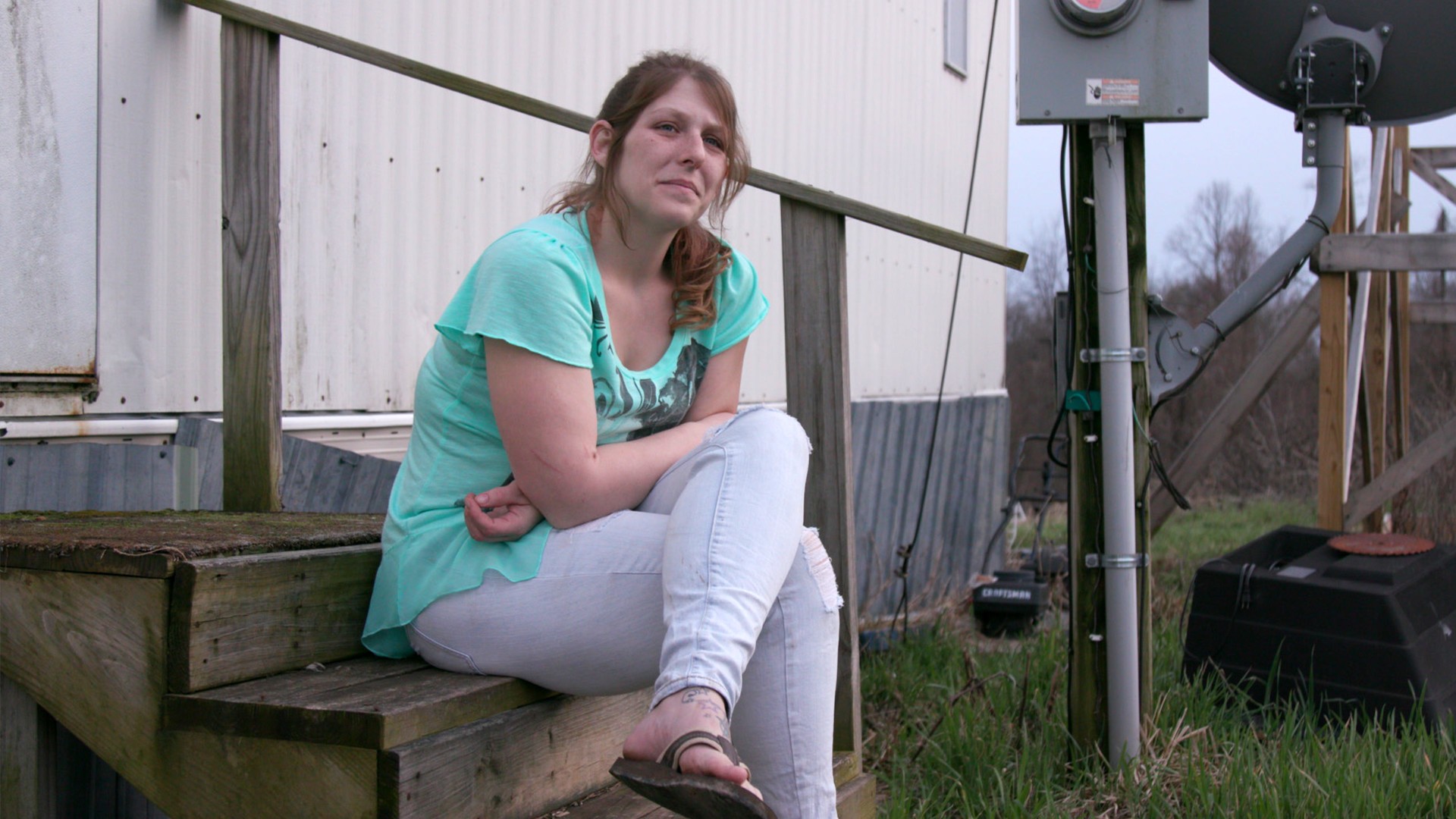Before he broke his back in a 1980s accident that ultimately triggered years of chronic pain, Jay Lawrence had to make a split-second decision. He was on a bridge with a car in front of him and the brakes on his truck had failed. "He saw a baby seat in the car and he hit the bridge," says his widow, Meredith Lawrence. She lost her husband to suicide earlier this year after his doctor abruptly decided to cut down his opioid pain medication."He had this great big personality," she says, describing how Jay loved to be around people and constantly insisted on helping her, even when he was in severe pain.But in March, Jay Lawrence shot himself with a gun that he insisted she purchase for him. He was 58. They were together in a park in Tennessee, near where, just two years earlier, they had renewed their wedding vows. When he died, Meredith was holding his hand. Afterwards, she called the police and was arrested for assisting a suicide (she's now on probation).Jay had warned his wife that there might come a day when the pain became too much for him. He'd had three back surgeries, countless steroid shots and nerve blocks, an electrical stimulator, a morphine pump, and several different types of prescription and non-prescription pain medications. He'd become resigned to the fact that he wasn't going to regain function, but on good days he could make Meredith coffee before she went to work and help tend to their menagerie of nine cats and two dogs.Then, in February, his doctor decided he would no longer prescribe the dosage of opioids that allowed Jay this small modicum of function. Since the introduction of the Centers for Disease Control and Prevention's guidelines for opioid prescribing in 2016, physicians who have chronic pain patients on doses higher than the equivalent of 90 milligrams of morphine a day are under increasing scrutiny, by both civil and criminal authorities.
Watch More From Tonic:
Though Jay had not misused the drugs or shown any signs of trouble, he was told that his dose would immediately be cut from 120 milligrams of morphine to 90 and would drop again within two weeks. "I will not do this," Meredith says he told her. And so, when she couldn't find another doctor for him and saw that his mind was absolutely made up, she agreed to help. "He was the most stubborn person I ever met," she says."It was either that or I would come home and find him," she says, adding that she didn't want that to be her last memory of him and certainly did not want him to die by himself."This would not have happened if they'd just left him alone," she says.Unfortunately, Jay is far from alone in being subjected to an involuntary opioid dose reduction. Since the guidelines were rolled out, 70 percent of more than 3,000 chronic pain patients who participated in an online survey by Pain News Network reported that doctors had either reduced or simply cut off their medications.And Jay is also far from the only person to have taken their life in response: several dozen similar cases have been documented by a growing and furious group of pain patient advocates and doctors (who are not funded by pharmaceutical companies), and who are starting to organize in the aftermath of the crackdown.The stories are nearly unbearable to read: descriptions of various forms of intense agony, mitigated to some extent with medication, which is then stopped regardless of the patients' pleas. And then, death: often by shooting, sometimes by overdose."I've seen a published list that heavily emphasizes publicly reported events, which includes between 20 and 30 suicides," says Stefan Kertesz, associate professor of preventive medicine at the University of Alabama, who is trying to raise alarm over the problem with the CDC and other health authorities. Kertesz says he receives numerous emails and social media posts from patients who are suffering and thinks the government needs to fund research to specifically track the outcomes of these patients. "Widespread suicidal ideation should be seen as a signal of a major risk," he says.Although the guidelines were intended to be voluntary and to apply only to general practitioners—not pain specialists—they've been widely interpreted as a mandate. Doctors who have patients on doses that exceed the guidelines receive letters from insurers and medical boards suggesting that they cut back; state Medicaid policies have been implemented that actually do mandate a maximum legal opioid dose and pharmacies like CVS are imposing their own limits on what they will dispense. The National Committee for Quality Insurance will now rate healthcare organizations on whether they keep doses below the limit—despite a protest letter signed by multiple experts involved in developing the CDC guidelines.All of this is occurring despite wide individual variation in opioid metabolism (meaning a high dose for one patient will be a low dose for another), tolerance (over time, higher doses can become necessary), pain condition (again, immensely variable) and a complete lack of research showing that forcibly lowering opioid dose is safe or effective."It remains the case that there is no evidence that mandated prescribing reduction results in better outcomes for patients," say Kertesz. While some data suggests that some patients improve with voluntary dose reductions—higher doses may sometimes paradoxically increase pain, a phenomenon known as hyperalgesia—none shows that forcible tapers do more good than harm in pain care. A recent study in the The International Journal of Drug Policy found that there was no reduction in addiction rates, either."A gradual taper is something every patient on high-dose opioids for chronic pain should be encouraged to do, and doctors owe it to these patients to explain why a taper makes sense," says David Juurlink, professor of medicine at the University of Toronto, who is a major proponent of decreasing the use of opioids for chronic pain. However, he says, "As much as high-dose opioid therapy is a bad idea, tapering abruptly without the patient's buy-in makes things worse. I discourage the practice at every opportunity."Juurlink says he would never cut opioid dosage as abruptly as was done in Jay's case. "I would not take someone from 120 to 90 in two weeks, unless he a) really wanted to, and, critically, b) understood that it might be tough, and that I'd take him back up to 120 if things got bad and we'd go more slowly next time."In the climate of fear induced by the opioid crisis, however, doctors are focused on self-preservation. Patients report coming into doctor's offices and seeing signs advising them that medication doses are being dropped, for everyone, no exceptions. "The popular discourse presents opioids as lethal and physicians as no better than heroin dealers," says Kertesz, "The result of this is that no public authority has been willing to articulate a safe harbor for physicians to protect their patients who need opioids."These patients need exactly that: some kind of certificate or validation that their doctors are permitted to prescribe for them and they are patients in good standing. The CDC also needs to make a public statement saying that its guidelines cannot be used to prosecute doctors who prescribe higher doses in good faith.The goal of lowering dosage is supposed to be to protect patients from the overdose death risk associated with high doses. But lowering numbers on a chart isn't saving lives—and some of these patients could even be overdosing because they've had a dose reduction, or fear one."Jay said that people need to be held accountable for this," Meredith says, "My job is to put a face to this problem. Real families are being hurt here. And I'm finding more and more people and hearing more and more stories."The CDC, the DEA, and other regulators who oversee our response to the opioid crisis must take heed. Cutting off opioids used by addicted people hasn't protected them—it's merely shifted them to more dangerous street supplies like heroin and fentanyl, further increasing the death rate. For pain patients, these suicides and the stories of those whose pain has worsened as their opioids were take away suggest that they, too, are being harmed. Who is being helped here? The operation cannot be a success if the patients die.If you or someone you know is considering suicide, help is available. Call 1-800-273-8255 to speak with someone now or text START to 741741 to message with the Crisis Text Line.Read This Next: Prescribed Painkillers Didn't Cause the Opioid Crisis
Advertisement
Advertisement
Watch More From Tonic:

Though Jay had not misused the drugs or shown any signs of trouble, he was told that his dose would immediately be cut from 120 milligrams of morphine to 90 and would drop again within two weeks. "I will not do this," Meredith says he told her. And so, when she couldn't find another doctor for him and saw that his mind was absolutely made up, she agreed to help. "He was the most stubborn person I ever met," she says."It was either that or I would come home and find him," she says, adding that she didn't want that to be her last memory of him and certainly did not want him to die by himself."This would not have happened if they'd just left him alone," she says.Unfortunately, Jay is far from alone in being subjected to an involuntary opioid dose reduction. Since the guidelines were rolled out, 70 percent of more than 3,000 chronic pain patients who participated in an online survey by Pain News Network reported that doctors had either reduced or simply cut off their medications.And Jay is also far from the only person to have taken their life in response: several dozen similar cases have been documented by a growing and furious group of pain patient advocates and doctors (who are not funded by pharmaceutical companies), and who are starting to organize in the aftermath of the crackdown.The stories are nearly unbearable to read: descriptions of various forms of intense agony, mitigated to some extent with medication, which is then stopped regardless of the patients' pleas. And then, death: often by shooting, sometimes by overdose.
Advertisement
Advertisement
Advertisement
